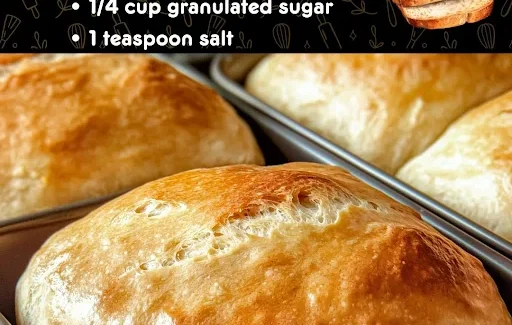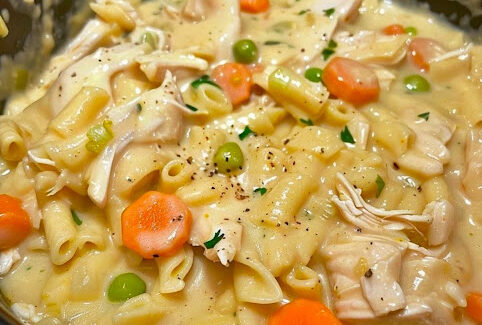
Step 3: Prepare the Vegetables
Place the sliced onion, carrots, and celery in the center of a large sheet of aluminum foil (heavy-duty preferred to prevent tearing). These vegetables act as a natural flavor base and cushion for the roast.
Step 4: Wrap the Roast
Place the seasoned roast on top of the vegetables. Pour beef broth (and optional red wine) around the roast, not directly over it, to avoid washing away the seasoning. Fold the foil over the roast tightly, creating a sealed “envelope” that will trap steam and juices inside. Make sure the edges are crimped securely.
Step 5: Roast Slowly
Place the foil-wrapped roast on a baking sheet and put it in the preheated oven. Cook for approximately 2.5–3 hours for a 3–4 lb roast. The foil envelope allows the meat to cook in its own juices, keeping it moist and flavorful.
Step 6: Check for Doneness
After 2.5 hours, carefully open one corner of the foil (watch out for hot steam). Insert a meat thermometer into the thickest part of the roast. The ideal temperature is:
- Beef medium: 135–140°F (57–60°C)
- Beef medium-well: 150–155°F (65–68°C)
- Pork: 145°F (63°C)
If it hasn’t reached your desired doneness, reseal and continue roasting, checking every 20–30 minutes.
Step 7: Rest the Roast
Once cooked, remove the roast from the oven and let it rest in the foil for 15–20 minutes. Resting allows the juices to redistribute throughout the meat, making it extra tender.
Step 8: Serve
Carefully unwrap the foil and transfer the roast to a serving platter. Spoon the vegetables and pan juices over the top or serve them on the side. Slice against the grain for maximum tenderness.
Tips for a Perfect Envelope Roast
- Use heavy-duty foil: It prevents tearing and leaking during long cooking.
- Optional aromatics: Add fresh herbs, bay leaves, or a splash of balsamic vinegar for deeper flavor.
- Make gravy: Pour the cooking juices into a saucepan, add a slurry of flour and water, and simmer until thickened for a delicious homemade gravy.
- Leftovers: Slice thinly and use in sandwiches or wraps the next day; the meat retains its juiciness remarkably well.
Why the Envelope Roast Works
The secret of the Envelope Roast lies in steam cooking. By sealing the roast in foil with its own juices and vegetables, the meat effectively braises in a self-contained environment. This technique prevents moisture loss, tenderizes even tougher cuts, and infuses the meat with incredible flavor without constant attention. It’s perfect for busy weeknights or lazy Sunday dinners.
The Envelope Roast proves that simple methods can produce extraordinary results. With minimal prep and a slow oven, you’ll have a roast that’s juicy, flavorful, and impressive enough to serve to guests or enjoy with family.
If you want, I can also create a shortened, visual step-by-step version perfect for printing and using in the kitchen, which makes it even easier to follow while cooking. Do you want me to do that?








No Responses Yet